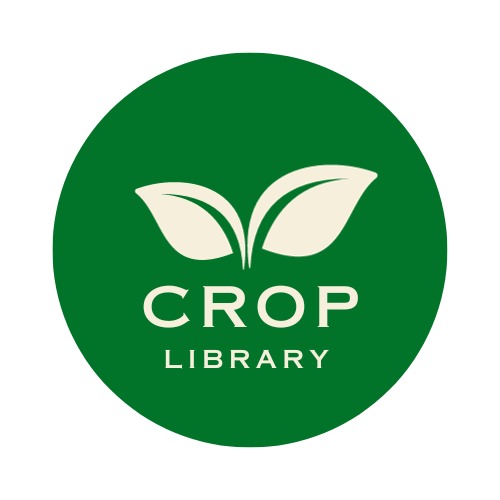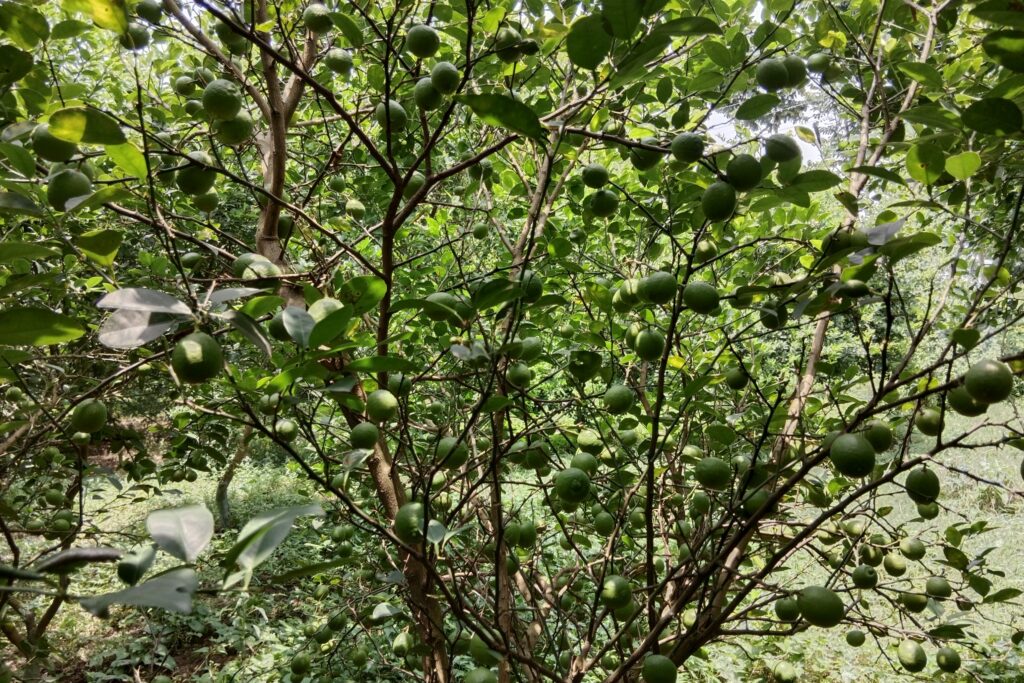What is Muskmelon?
Melons are highly valued horticultural crops cultivated extensively in tropical and temperate regions worldwide. Muskmelon, a warm-season cucurbit species belonging to the Cucurbitaceae family, holds particular significance in this group. Fruit size, sweetness, aroma, and total shelf life are just a few of the variables that can be affected by muskmelon fertilizers. Known for their juicy, sweet orange flesh, muskmelons are also recognized for their robust root systems, which efficiently utilize soil volume and exhibit strong drought resistance, especially in sandy loam soils. Muskmelon is a highly cross-pollinated crop having monoecious or andromonoecious vines. They thrive best in well-drained, deep soils with a pH range typically between 6.0 and 6.6.

These fruits are predominantly composed of water, typically exceeding 90%, and are low in fat while rich in carbohydrates, dietary fiber, vitamins—particularly vitamin C and provitamin A—and various phenolic compounds and flavonoids. The seeds of muskmelon, honeydew melon, and cantaloupe are valued sources of essential fatty acids and antioxidants.
Cultivation practices for high-yielding muskmelons emphasize balanced nutrition and appropriate plant spacing. Optimal planting densities, such as a close spacing of 60 cm between plants, have been observed to maximize yields. However, wider spacing, while potentially increasing individual fruit size, may not compensate for reduced plant populations in terms of overall yield.
Muskmelons are typically sown between November and February, with harvesting mainly occurring during the summer months.
In addition to their nutritional benefits, muskmelons are cherished for their sweet, flavorful flesh and are prized for their culinary versatility. They are considered a healthy addition to diets due to their nutrient profile and are associated with various health benefits.
Types of Muskmelons
Two main types of muskmelons based on their characteristics and intended use:
Eastern Type Muskmelons
- The shape of these muskmelons is usually round to oval.
- They have a netted rind with surface ridges (sutures).
- Eastern-type muskmelons have sweet, orange flesh.
- These varieties are generally not suited for long-distance shipping due to their delicate nature, which may lead to faster ripening and softer texture during transportation.
Western Shipping Type Muskmelons
- This category includes muskmelons that are round to slightly oval.
- They have a sutureless smooth rind that is heavily netted (covered with a latticework pattern).
- The flesh of these muskmelons is firm, salmon-colored, and known for its sweet taste.
- Western shipping-type muskmelons have the ability to withstand longer distances during shipping by maintaining their quality and freshness.
Muskmelon Vs cantaloupe
Both muskmelon and cantaloupe are types of melons, cantaloupe refers specifically to melons with a rough, netted skin and a distinctive flavor profile, whereas muskmelon is a broader category that includes a variety of melons with different skin textures and flavors. Here is the difference between these two:
- Skin Texture: Cantaloupes have rough, netted skin, while muskmelons can have either smooth or lightly netted skin.
- Flavor and Aroma: Cantaloupes are known for their sweet, orange flesh and strong musky aroma, while muskmelons have a sweet flavor with a less intense aroma compared to cantaloupes.
- Common Varieties: All cantaloupes are muskmelons, not all muskmelons are cantaloupes.
Muskmelon Vs honeydew
In contrast to muskmelons, honeydew melons have smooth skin, green meat, and a distinctly distinctive aroma. Honeydews can be kept in storage for up to a month, unlike muskmelons. After being plucked from the vine, melons stop ripening, however, honeydews can continue to ripen somewhat, though vine-ripening is preferred.
- Skin Texture: Honeydew melons have a smooth, waxy rind, while muskmelons can have either smooth or lightly netted (rough) skin.
- Flavor: Honeydew melons are known for their mild, sweet flavor with a subtle taste, while muskmelons like cantaloupe have a stronger, more musky aroma and flavor.
- Color: Honeydew melon flesh is typically pale green to white, whereas muskmelon flesh can range from orange to greenish white depending on the variety.
- Texture: Honeydew melons tend to have a firm, juicy texture, whereas muskmelons vary in texture from firm to tender.
Fertilizer Need for Muskmelon
As muskmelon requires a lot of nutrients, growing it requires a lot of fertilizer. Initially, muskmelons absorb nutrients more slowly when they are at the seedling stage. But as flowering starts, vital nutrients like potassium, phosphate, and nitrogen are gradually taken up by the plant. This stage is a crucial time when a steady and balanced supply of these nutrients is needed to sustain the rapid growth of plants and the production of high-quality fruits.
The physiological and chemical properties of muskmelon fruits are greatly influenced by the type of fertilizer selected. Based on local soil conditions and crop management techniques, farmers frequently modify their fertilizer cycles to maximize these qualities.
Fertilizers are necessary to produce muskmelon with large yields and great fruit quality, even if they come at a significant cost. In addition to increasing crop yield, effective fertilizer management guarantees that the fruits satisfy consumer requirements for flavor, appearance, and nutritional content. As a result, effective fertilization techniques continue to be essential to muskmelon farming success, striking a balance between financial concerns and the necessity of providing customers with wholesome, tasty produce.
8 Major Muskmelon Fertilizers
Fertilizer is a major part of successful crop yields and high fruit quality. Here are the major fertilizers:
FYM
As an organic substance, farmyard manure (FYM) is essential for improving soil quality since it affects several types of soil properties. It promotes water uptake and retention, strengthens aggregate stability, increases soil aeration, and enables nutrient mineralization. In addition to increasing the soil’s ability to raise the amount of water that is available for plant growth. It also helps to enhance the physical characteristics of soil. Moreover, FYM also contains macro as well as micronutrients required by crops.
Since FYM greatly increases the amount of water that sandy soils can hold, it is especially advantageous to apply it to them. FYM improves soil structure in finer-textured soils, slowing down the rate of soil deterioration. Because soil resilience and fertility are crucial for sustainable agricultural practices, this organic material serves as a natural conditioner. FYM promotes healthier plant growth and raises agricultural productivity overall by enhancing soil structure and retaining moisture. As a result, including farmyard manure in agricultural methods is essential for preserving and enhancing soil health, guaranteeing ideal circumstances for strong plant growth, and promoting environmental sustainability.
Apply FYM 20 t/ha before the final plough.
Pseudomonas
Pseudomonas fluorescens improves soil phosphorus (P) availability and salt solubility by application. It also facilitates the uptake of nitrogen (N), zinc (Zn), phosphorus, and manganese (Mn) by plants. Furthermore, it has been demonstrated that Pseudomonas fluorescens increases fruit weight and size, underscoring its advantageous effects on crop productivity and quality.
Apply 2.5 kg/ha of Pseudomonas fluorescens along with 50 kg of farmyard manure (FYM) and 100 kg of neem cake before the final ploughing.
Azospirillum
The ability of beneficial soil bacteria, Azospirillum, to fix atmospheric nitrogen and make it available to plants is well documented. Intake of nutrients, especially nitrogen, is increased, and compounds that promote plant development are produced. Azospirillum is widely used as a biofertilizer to improve crop productivity and soil fertility in an environmentally friendly way.
Apply @ 2kg/ ha before the last ploughing.
Phosphobacteria
Phosphobacteria are responsible for solubilizing phosphorus and increasing plant accessibility. They improve root development and phosphorus uptake, which both contribute to increased plant growth.
Apply @ 2 kg/ha before the last ploughing.
Nitrogen (N)
Higher nitrogen levels have been shown to increase auxin production in plants, which might decrease apical dominance and promote the growth of lateral shoots or sub-creepers.
Too much nitrogen near fruit ripeness might negatively impact the fruit’s ability to store sugar.
It’s critical to control nitrogen carefully both throughout and after flowering. During this time, too much nitrogen may hinder the development of flowers and the setting of fruit, resulting in lesser yields. In order to increase melon production and maintain good fruit quality, it is important to balance the application of nitrogen to support healthy plant growth.
Apply 100 kg N/ ha in three equal split doses: first at the time of planting, second 30 days after planting, and, third 60 days after planting.
Phosphorus (P)
Phosphorus is necessary for both root development and general plant growth. As soon as the melon plants start to flower, start fertilizing them with a high potassium and phosphorus content to promote faster growth.
Apply 60 kg P/ ha at the time of planting.
Potassium (K)
Potassium fertilizers are essential for enhancing fruit quality and promoting early ripening. They also reduce fruit cracking by thickening the rind. Studies indicate that for every 1000 kg of melon produced, 4.4-6.8 kg of potassium is depleted. This nutrient is crucial in melon cultivation, supporting overall plant health and ensuring high-quality fruit yields.
Apply 60 kg K/ ha in two equal split doses: first at the time of planting, and next before flowering begins.
Calcium (Ca) & Boron (B)
The absorption of calcium peaks 26–27 days after the fruit sets and keeps on till the fruit ripens. The sugar content and appearance of fruit are influenced by calcium and boron. Fruit surfaces with too much calcium are harsh and white, and pulp with too little boron gets brown blotches. Applying boron and calcium helps fruits avoid physiological problems such as blossom end rot.
To enhance early yield, spray ethephon once on the second and fourth true leaves at a concentration of 100 ml/L. This treatment boosts the weight of female flowers and average melon size, as well as increases pulp thickness, soluble solids, and vitamin C content.
FAQs
Q1. When to pick muskmelon?
Harvesting too early can result in a less sweet and flavorful melon, so timing is crucial for maximizing taste and quality. The exact timing varies slightly depending on the variety and growing conditions, but there are general indicators to look for.
- Aroma: The melon should have a pleasant aroma at the blossom end, where it was attached to the vine.
- Color: The skin color changes from green to a yellowish or creamy hue, which may develop slightly softened when gently pressed.
- Tendrils: The tendrils near the fruit should be dried and brown.
- Sound: A hollow sound produced when you tap it with your knuckle indicates it’s ripe.
Q2. How to increase the sweetness of muskmelon?
Here are tips to increase the sweetness of muskmelon:
- Heat
Plant melons in a location that warms up early in spring and remains hot through the end of September to enhance their sweetness, as heat promotes sugar development in the fruits.
- Proper spacing
Spaced plant seedling at 2 feet apart in rows 6 feet apart. Thin to three melons per vine for better nutrient and sugar concentration.
- Organic fertilizer
Sugars from photosynthesis in leaves boost the Brix rating of melons. For the vigorous growth of leaves, apply the organic fertilizers mentioned above in this article before planting. Planting melons in a compost pile can also provide extra nutrients and heat.
- Water Supply
The plant needs enough moisture to go from blossoming through the process of developing fruit. But too much water during the last several weeks of ripening dilutes the fruit’s sugar content. Therefore, don’t water your plants in any way while they are maturing.
- Pick at the right time
If you pick an immature melon, it won’t be sweet, no matter how well you do everything else. A fruit’s scent, a little weakening of the peel, and a hollow sound produced when you tap it with your knuckle are all indicators that it’s ripe.
Q3. Which fertilizer increases the size of watermelon?
Fertilizers rich in potassium and phosphorus are particularly effective in increasing the size of watermelons. Potassium helps in the development of the fruit by enhancing its overall size and sweetness, while phosphorus promotes strong root development and flowering. Additionally, organic options like compost or well-rotted manure can provide essential nutrients improve soil health, and ensure optimal growth and fruit size.


